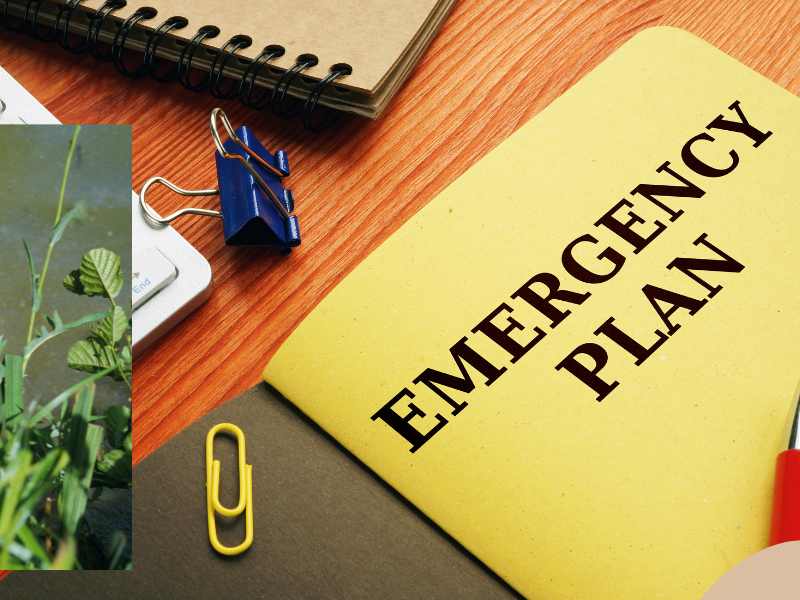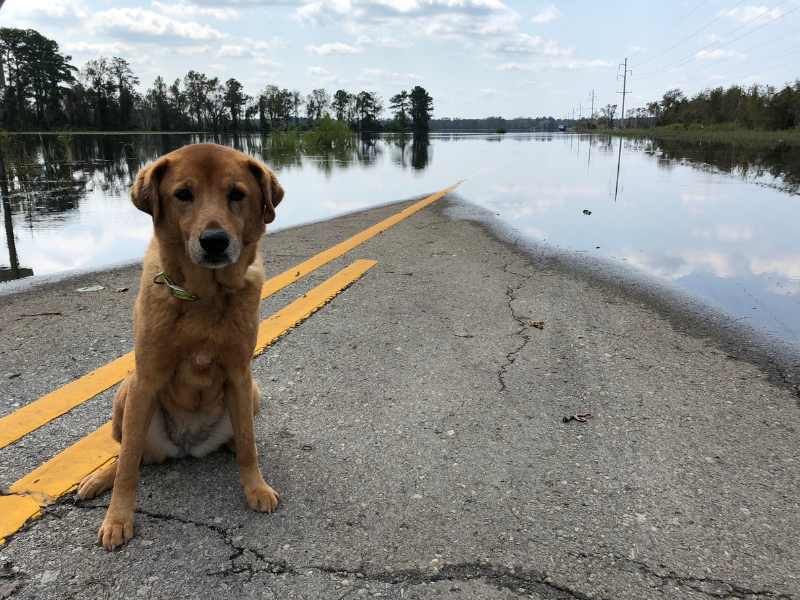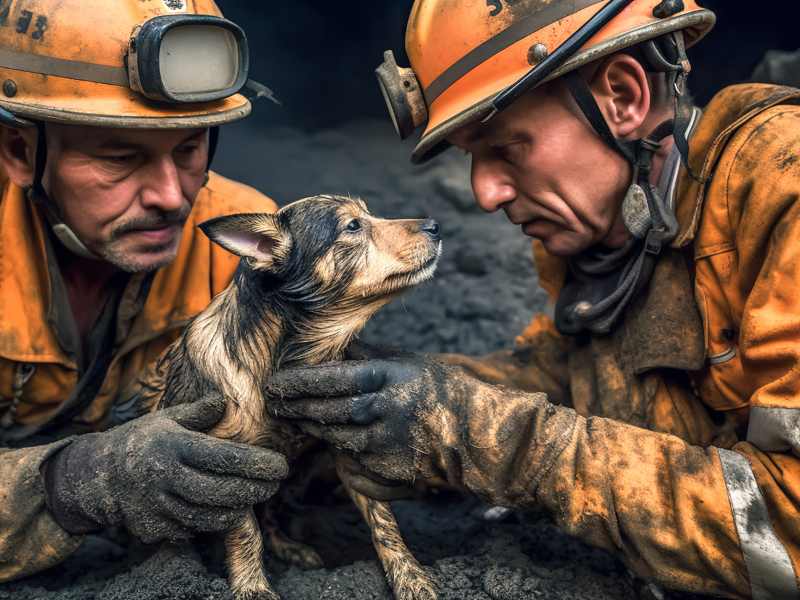We love them; they love and depend on us. We go to great lengths to make sure our furry family members are happy, healthy, and safe. However, when unexpected disasters strike, we need to be prepared to care for them under extenuating circumstances. Preparing for emergencies is the key to making sure our beloved dogs are protected and cared for during times of crisis.
Why Disaster Preparedness for Dogs Matters
Disasters can happen anywhere, anytime, and often with little or no warning. Whether it’s a sudden flood, a destructive earthquake, or a severe storm, emergencies and disasters present unique threats to us and our pets. Without a plan, we risk being separated from our pets, facing delays in their care, or worse. Incorporating your dog into your family’s emergency preparedness is as essential as any other aspect of pet parenting, and one that can make all the difference if disaster does strike.
Understanding Potential Emergencies For Dogs
To prepare for whatever may come up, it’s really important to understand the types of emergencies that are most likely to affect your area. Weather-related incidents can range from hurricanes and tornadoes to extreme heat and cold spells, and each requires a different approach to making sure your dog is safe. Natural disasters like earthquakes, floods, or wildfires may make you need to jump into action on short notice. Recognizing these potential threats around you, you can come up with a plan that considers all the possible scenarios to keep your dog safe and sound, no matter what Mother Nature throws your way.
Pet Disaster Preparedness: Plan for Your Pets
When disaster looms, having a well-thought-out plan that includes your pets can mean the difference between life and death. As much as we love and adore our dogs, in the chaos of an emergency, their needs can be easily overlooked if we don’t already have them as part of our overall family strategy in emergencies.
In times of crisis, the last thing we want is to be separated from our pets or to see them stressed out. By proactively including your dog in your family’s emergency plan, you can make sure that their specific needs are addressed and that they remain with you, safe and secure, throughout any crisis. This includes planning for scenarios where you might need to evacuate your home quickly or shelter in place for an extended period.
Tips for Identifying Pet-Friendly Shelters or Accommodations
The main thing is to research plan options early. Don’t wait for an emergency to find pet-friendly accommodations because by then, it’s likely too late. Research and list nearby shelters and facilities that accept pets and be sure they accept pets of your dog’s size. Keep a list of pet-friendly hotels or motels within driving distance that can serve as an emergency haven. Additionally, consider the following tips for preparing for an emergency with your dog:
- Check Local Regulations: Familiarize yourself with local regulations and policies regarding pets in public shelters. Some shelters are specifically designed for pet owners, while others might have restrictions based on size, breed, or the number of pets. It’s good for you to know where your shelters are, and which ones take all your family members.
- Prepare for Identification: Make sure your pet has proper identification such as a microchip or a collar with tags. This is so important in case you get separated. Shelters or accommodations will need your pet’s identification to process your stay and verify ownership. Make sure your chip information is up to date.
- Consider Special Needs: If your dog has specific needs, such as medications, dietary restrictions, or mobility issues, identify accommodations that will help you manage these needs under stress. Check with shelters to make sure they’re allowed as well.
- Network with Pet Owners: Networking with other pet owners in your area can provide insights into lesser-known resources that accommodate pets during emergencies. Community groups or online forums can be great places to gather such information. It’s true that we’re better together, especially in a crisis.
- Contact Authorities: Local animal control agencies, veterinary offices, and emergency management agencies can provide recommendations and advice on planning for your pet in an emergency. This helps them help you before the need arises and can make a difference in how the whole plan is executed.
The goal is to make sure you have emergency planning already done so that when you need to act fast, you have a clear, actionable strategy that includes your dog’s safety and well-being. This preparation keeps your dog safe and helps reduce stress, knowing that you have planned for their care.
Make An Emergency Plan For Dogs
Creating a comprehensive emergency plan for your pets ensures you can act quickly and effectively, minimizing panic and maximizing safety when every second counts. Here’s a step-by-step to creating an emergency plan for your dog:
- Gather Information: Start by gathering all essential information about your pet. This includes veterinary records, identification numbers (like microchip details), medications, dietary needs, and any behavioral issues. Keep this information in a waterproof, easily accessible container.
- Designate Caregivers: Identify a trusted family member, friend, or neighbor who can care for your pet if you are unable to reach them quickly in an emergency. Make sure this person is familiar with your pet and willing to take on the responsibility. Provide them with keys to your home and instructions for your pet’s care, and if possible, have them do a ‘run-through’ so they’re not nervous in an emergency situation either.
- Plan for Evacuation and Sheltering: Map out primary and secondary evacuation routes and identify safe places where you can take your pet. This plan should include multiple options such as pet-friendly shelters, hotels, motels, or relatives’ homes that are out of the danger zone. Remember, it’s likely that in an emergency, others will also be seeking similar resources so having options is crucial.
- Prepare Emergency Supplies and Traveling Kit: Pack a pet emergency kit that includes food, water, medications, first aid supplies, copies of medical records, leashes, carriers, and comfort items like toys or blankets. Ensure everything is portable and ready to go at a moment’s notice. It may seem redundant to have these things separate from the toys, blankets and leashes they use every day, but you’re not going to want to (or have time to) gather those in an emergency.
- Practice Evacuation Drills: Regularly practice your evacuation plan with your pet so they become accustomed to entering and traveling in their carrier, and so you can troubleshoot any issues that arise during these practice runs. They’ll also help your dog not be as stressed in a true emergency.
- Stay Informed: Keep up with local hazards by signing up for local emergency management office alerts. Understanding the types of disasters likely to affect your area can help you refine your plan accordingly as you need.
Coordination with Local Pet Services and Emergency Contacts
- Local Animal Shelters and Veterinary Clinics: Know where your local animal shelters and veterinary clinics are, as they can provide essential information and services during and after an emergency. They may also serve as a resource for temporary housing or medical care.
- Emergency Veterinary Hospitals: Keep a list of 24-hour emergency veterinary hospitals along with directions on how to get there from your home and any evacuation sites you have planned.
- Animal Control: Have the contact information for your local animal control to inquire about their services and assistance during emergencies. They can offer guidance on pet rescue, especially in severe disasters.
- Pet Rescue Organizations: Establish connections with local pet rescue organizations. They can be invaluable in providing resources or aiding in rescuing and caring for pets during large-scale disasters.
How To Find A Safe Location During Various Disaster Scenarios
There are tons of different types of natural disaster situations and they may require different planning. The most common include preparing for the following:
- For Storms, Tornadoes and Hurricanes: Choose a room in your home without windows as your sheltering spot. This could be a bathroom, basement, or any central room, preferably not an outside wall. Make sure there’s nothing dangerous in that room and that it is stocked for emergencies with supplies.
- For Floods: Identify high ground well in advance. If you live in a flood-prone area, plan for an evacuation route that takes you to higher elevation areas where flood waters are less likely to reach, and don’t be afraid to act preemptively and quickly.
- For Earthquakes: If you are indoors, train your pet to come to a designated “safe spot” away from windows, glass, and heavy furniture that could topple. Keep their carrier, leash, and emergency kit in a place where you can grab them quickly.
- For Wildfires: Have multiple evacuation routes planned, as fires can shift and block paths unexpectedly. Keep car fuel levels high during wildfire season and your pet’s emergency kit readily accessible.
Create an Emergency Kit for Your Dog
Having a well-stocked emergency kit for your pet is essential to ensure their well-being during a disaster. This kit should be readily accessible and easy to find, and include all the necessities your pet might need, whether you are sheltering in place or evacuating. Here’s what to pack:
- Food and Water: Provide at least a three-day supply of your dog’s regular food in airtight, waterproof containers and at least three days’ worth of water specifically for your dog’s needs.
- Medications and Medical Records: Pack any medications your dog needs, along with a detailed list of dosages and administration instructions. Include copies of your pet’s medical records and vaccination proof in a waterproof container.
- First Aid Kit: A basic pet first aid kit should include items such as gauze, tape, scissors, antiseptic spray or wipes, a pet-safe antibiotic ointment, and a digital thermometer. Consider including a first-aid reference book for pets.
- Collar with ID Tag, Harness, and Leash: Ensure your dog’s collar is sturdy and includes an up-to-date ID tag. A harness and a leash are also crucial for keeping your dog secure during an emergency.
- Carrier or Portable Shelter: Have a secure, comfortable carrier or portable shelter for your dog, which is essential for evacuation. The carrier should be large enough for your dog to stand, turn around, and lie down comfortably.
- Sanitation Supplies: Include poop bags, paper towels, disinfectant and cleaners, and a small container or plastic bag for the disposal of waste. The stress could make them nervous
- Comfort Items: Pack some of their favorite toys, blankets, or treats to help ease stress and provide your pet with a sense of comfort and normalcy.
Special Considerations for Medication, Dietary Needs, and Comfort Items
- Dietary Needs: If your dog is on a special diet, pack extra food in case you’re unable to find the specific brand or type during an emergency. Include any dietary supplements or additives they regularly use.
Remember, the goal of your pet’s emergency kit is not just to sustain them but to keep them as comfortable and calm as possible under the circumstances. Regularly check and refresh your kit’s contents, especially perishable items like food and medicine, to make sure everything is in good condition and ready to use when needed. You’ll never know when you’ll need it, so keep it ready.
Sheltering in Place With Your Dog
When emergencies strike, sometimes the safest option is to stay at home. Sheltering in place can be less stressful for your pets than evacuating, provided you take the right steps to ensure their safety and comfort. Here’s how to effectively shelter at home with your pets during emergencies.
- Choose a Safe Room: Identify a safe room in your home where you and your pets will stay. This should be an interior room with few or no windows, such as a bathroom or utility room, with minimal hazards. Make sure it’s free from any items that could fall and injure your pet, such as heavy frames, mirrors, or unstable furniture.
- Keep Your Pets Indoors: Even if your dogs are usually outside, bring them indoors as soon as you know you’ll be sheltering in place. This prevents them from running off due to fear or getting injured by falling debris.
- Keep A Calm Environment: Keep the noise to a minimum to help reduce stress. You can play soft music or white noise to help drown out frightening sounds like thunder or wind.
- Stay Together: Keep your pets with you in the safe room to reassure them and make monitoring their behavior easier. This also makes it easier for you to address any needs they might have during the emergency quickly.
- Prepare Emergency Supplies: Within your safe room, have your dog’s emergency kit readily accessible. This includes food, water, medications, sanitation supplies, and comfort items.
- Monitor Exit Points: Ensure all windows and doors are securely closed to prevent your dog from escaping. If you have small dogs, keep them in cages or carriers when not directly supervised to prevent them from finding small nooks to hide in.
Securing the Environment for Your Pet’s Safety and Comfort
- Remove Dangers: Walk through the area to identify and remove any potential hazards that could harm your dog, such as toxic plants, electrical cords, sharp objects, and small items that could be swallowed.
- Climate Control: Maintain a comfortable temperature in the room. Avoid rooms that might become too hot or too cold, depending on the nature of the emergency. If the power is out, find natural ways to regulate the temperature, like using towels under doors or windows to keep heat or cold out.
- Provide Hiding Places and Bedding: Some dogs feel safer in small, enclosed spaces. Providing crates with comfortable bedding or allowing access to under furniture can help them cope with the situation. Ensure the bedding is clean and dry, and if possible, use their usual bedding to provide familiar smells.
- Hydration and Feeding Stations: Set up areas for food and water away from the litter or waste disposal area. This separation helps maintain hygiene and makes the environment more comfortable.
If You Evacuate, Take Your Pet
Evacuating your home in an emergency can be stressful, and making you have a plan that includes your pets is a must. Here’s how to prepare for evacuation with your pets and the steps to take if, in the worst case, you must leave them behind.
- Prepare a Pet Emergency Kit: As we already mentioned, have a ready-to-go emergency kit for each of your pets, including food, water, medications, and other necessities.
- Keep Carriers Accessible: Store pet carriers in a location where you can quickly access them. Ensure each pet has a carrier that is the correct size, allowing them to stand, turn around, and lie down comfortably.
- Practice Loading: Regularly practice loading your pets into their carriers and into your vehicle. This can help minimize stress and confusion during an actual evacuation.
- Secure Your Pets Early: When you think you might need to evacuate, secure your pets early in the process. Animals can sense stress and may hide or become difficult to manage in the chaos of a last-minute evacuation. You don’t want to be scrambling to find them.
- Identify Pet-Friendly Evacuation Routes and Shelters: Consult the list you created before the emergency popped up.
What To Do If You Must Leave Your Pet Behind (As A VeryLast Resort)
Leaving your pet behind should only be considered if there is absolutely no other option and your own life is in immediate danger. If you find yourself in this gut-wrenching and ire situation, take the following steps to increase their chances of safety and recovery:
- Inform Authorities: Contact local animal shelters, veterinary clinics, or emergency services to inform them that your pet is alone at home. Provide them with details on how to access your home and where your pets are likely to be found.
- Leave Enough Supplies: Leave behind at least a week’s supply of food and water. Place the supplies in an accessible location, along with feeding instructions.
- Do Not Confine Them Too Tightly: If possible, do not lock your pets in a single small room or cage where they have no chance to escape in case the situation gets worse (like a fire or flood). Instead, confine them to a safe area or room where they have some mobility.
- Leave Noticeable Signs: Place a rescue alert sticker on your front door or window with information about the pets inside, including their number, type, and location. This can help rescue workers find and prioritize them. The more notice you can give that your dog is there, the better.
- Provide Comfort Items: Leave behind familiar items, such as bedding, toys, and other comfort items, to help reduce their stress.
- Make Arrangements for Their Rescue: Do everything in your power to arrange for someone—whether a neighbor, friend, or pet sitter—to check on and care for your pets if you cannot return home promptly.
While the thought of leaving pets behind is heart-wrenching, preparing for all eventualities will give you the best chance of ensuring their safety. Always prioritize human life and safety, but take every measure possible to avoid having to leave a pet behind during an evacuation.
Guidelines for Adequate Dog Food and Water Supplies During Emergencies
Making sure your dog has access to adequate food and water during an emergency is critical for their survival and well-being. Here’s how to prepare and maintain these essential resources under challenging circumstances.
- Stockpile Supplies: Store at least a three-day supply of food and water for each pet, ideally a week’s supply. Use sealed, airtight containers to keep food fresh and free from contamination.
- Choose Suitable Food: Opt for dry pet food for a longer shelf life or canned food for higher moisture content, depending on your pet’s needs. Rotate these supplies every few months to maintain freshness.
- Water Storage: Store bottled water or fill clean containers with water for your dogs. Avoid giving dogs water that has been chemically treated for human use unless there is no alternative.
- Feeding Instructions: Keep detailed feeding instructions with your emergency kit, including the amount of food and frequency of feeding, which can be crucial if someone else ends up taking care of your dog.
- Sanitary Feeding Practices: Try your best to maintain cleanliness in feeding areas to prevent the spread of bacteria and disease. Use disposable feeding dishes if possible, or sanitize reusable dishes regularly.
- Monitor Diet and Health: Keep a close eye on your pet’s diet and health. Changes in their eating habits can be an early indicator of stress or illness.
- Supplements and Medications: Include any dietary supplements or medications your pet regularly takes, as these can be critical for maintaining their health in stressful situations.
- Maintain Routine: Try to keep feeding routines as normal as possible to minimize stress and avoid gastrointestinal issues.
Health and Safety Concerns During Emergencies
During an emergency, the health and safety of your dog can be at risk. Being prepared to handle medical situations and knowing how to access veterinary care can make a significant difference in outcomes for your best friend.
First Aid for Pets and Recognizing Emergency Health Issues
- Pet First Aid Kit: Equip your emergency kit with pet-specific first aid supplies, including bandages, antiseptics, a pet-safe antihistamine, tweezers for removing splinters or ticks, and a pet thermometer. Include any medicine your dog may be on.
- Learn Basic First Aid: Learn how to perform basic first aid on pets. This includes how to handle cuts, burns, and other injuries, and how to perform CPR on pets if necessary.
- Recognizing Signs of Distress: Know the signs of distress in your pets, such as excessive panting, drooling, lethargy, or unresponsiveness. Immediate action can prevent further complications.
Regular Veterinary Care and Emergency Services During Disasters
- Identify Emergency Veterinary Services: Know where your nearest emergency vet clinic is and have their contact information readily accessible. Additionally, learn the location of 24-hour veterinary hospitals along your planned evacuation routes.
- Document Health Information: Keep a record of your pet’s medical history, ongoing treatments, and any behavioral issues as part of your emergency preparedness. This information can be vital for emergency responders or temporary caretakers.
No one wants the worst to happen, but if it does, being prepared may be what saves your dog’s life. By preparing for food, water, health, and safety needs, you can make sure your dog stays as healthy and comfortable as possible during emergencies.


